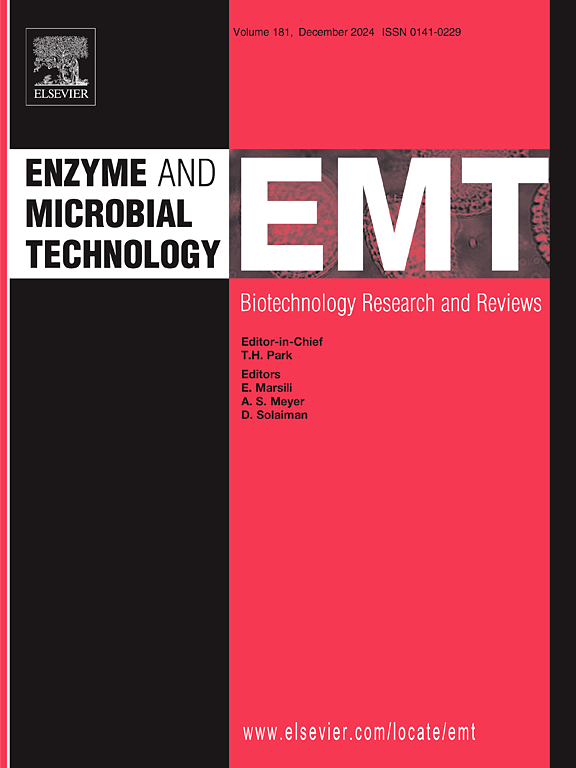驼奶乳酸菌的益生菌潜力、安全性评价及功能特性
IF 3.7
3区 生物学
Q2 BIOTECHNOLOGY & APPLIED MICROBIOLOGY
引用次数: 0
摘要
骆驼奶是阿尔及利亚沙漠中最有价值的食物来源之一。此外,它是功能性食品的有力候选者,因为它含有促进健康的有益微生物。本研究对从骆驼奶中分离的144株乳酸菌进行了研究,考察了它们的益生菌、安全性、工艺和抗氧化性能。其中,19种乳酸菌对模拟胃环境表现出非常高的耐受性,并被选中进行进一步分析。经序列分析,分离得到植物乳杆菌15株,气体乳杆菌3株,屎肠球菌1株。结果表明,所有分离株对胆盐均表现出耐受性,耐受性范围为94.86 % ~ 102.81 %。结果表明,所有菌株均未表现出不良的溶血、dna酶和明胶酶活性或传染性抗生素耐药性。此外,证实了毒力或生物胺基因的缺失。在主成分分析中,菌株L. gasseri C1表现出较高的自聚集性和疏水性。此外,菌株对各种食源性病原体表现出有效的拮抗特性。值得注意的是,一些菌株,包括L. plantarum A5、A8和BN2,以及L. gasseri C1,对单核增生李斯特菌表现出特异性的抗菌活性,可能是由于细菌素或其他抗菌化合物的产生。此外,大多数菌株表现出胆汁盐水解活性,所有菌株都表现出清除DPPH自由基的抗氧化活性。此外,11 L。植物分离物具有gad基因,负责GABA的产生。这些发现支持了这些分离菌作为益生菌在食品和治疗环境中的潜在应用。本文章由计算机程序翻译,如有差异,请以英文原文为准。
Probiotic potential, safety assessment, and functional properties of lactic acid bacteria from camel milk
Camel milk is one of the most valuable food sources in the Algerian desert. Furthermore, it is a strong candidate for use as a functional food because it contains beneficial microorganisms that promote health. The present study investigates 144 lactic acid bacteria isolated from camel milk, examining their probiotic, safety, technological, and antioxidant properties. Of these, 19 lactic acid bacteria showed very high tolerance to the simulated gastric environment and were selected for further analyses. According to the sequence analysis, 15 isolates were identified as Lactiplantibacillus plantarum, 3 as Lactobacillus gasseri, and 1 as Enterococcus faecium. The results indicated that all isolates demonstrated tolerance to bile salts, with levels ranging from 94.86 % to 102.81 %. It was established that none of the strains exhibited undesirable hemolysis, DNase and gelatinase activity, or transmissible antibiotic resistance. Furthermore, the absence of virulence or biogenic amine genes was confirmed. In particular, strain L. gasseri C1 showed remarkably high levels of auto-aggregation and hydrophobicity, which was also revealed in the principal component analysis. Furthermore, the strains exhibited potent antagonistic properties against various foodborne pathogens. Notably, several strains, including L. plantarum A5, A8, and BN2, and L. gasseri C1, showed specific antimicrobial activity against Listeria monocytogenes, potentially due to bacteriocin or other antimicrobial compounds production. Additionally, the majority of the isolates demonstrated bile salt hydrolysis activity, and all strains exhibited antioxidant activity by scavenging DPPH free radicals. Moreover, 11 L. plantarum isolates possessed the gad gene responsible for GABA production. These findings support the potential application of these isolates as probiotics in both food and therapeutic contexts.
求助全文
通过发布文献求助,成功后即可免费获取论文全文。
去求助
来源期刊

Enzyme and Microbial Technology
生物-生物工程与应用微生物
CiteScore
7.60
自引率
5.90%
发文量
142
审稿时长
38 days
期刊介绍:
Enzyme and Microbial Technology is an international, peer-reviewed journal publishing original research and reviews, of biotechnological significance and novelty, on basic and applied aspects of the science and technology of processes involving the use of enzymes, micro-organisms, animal cells and plant cells.
We especially encourage submissions on:
Biocatalysis and the use of Directed Evolution in Synthetic Biology and Biotechnology
Biotechnological Production of New Bioactive Molecules, Biomaterials, Biopharmaceuticals, and Biofuels
New Imaging Techniques and Biosensors, especially as applicable to Healthcare and Systems Biology
New Biotechnological Approaches in Genomics, Proteomics and Metabolomics
Metabolic Engineering, Biomolecular Engineering and Nanobiotechnology
Manuscripts which report isolation, purification, immobilization or utilization of organisms or enzymes which are already well-described in the literature are not suitable for publication in EMT, unless their primary purpose is to report significant new findings or approaches which are of broad biotechnological importance. Similarly, manuscripts which report optimization studies on well-established processes are inappropriate. EMT does not accept papers dealing with mathematical modeling unless they report significant, new experimental data.
 求助内容:
求助内容: 应助结果提醒方式:
应助结果提醒方式:


